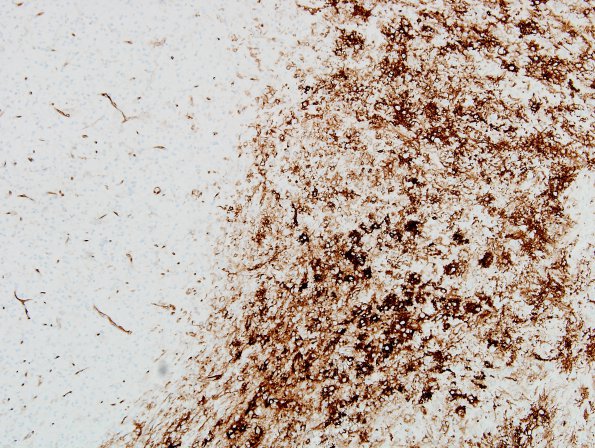Table of Contents
Washington University Experience | NEOPLASMS (NEURONAL) | DNET | 24C2 DNET (Case 24) CD34 1.jpg
Immunohistochemistry for CD34 shows no reactivity within the 'specific glioneuronal element' but strong reactivity within numerous large, highly branched cells in the adjacent cortex with a distinct nodular distribution. ---- Ancillary findings (not shown): Immunohistochemistry for GFAP highlights numerous reactive astrocytes and the background brain parenchyma; the vast majority of the oligodendroglioma-like cells show no reactivity. Reactivity for p53 stains only very rare nuclei with low intensity. Reactivity for ATRX within tumor nuclei is retained. Immunostains for IDH1 (R132H variant) and for BRAF V600E are negative. Reactivity for proliferation marker Ki-67 stains only very rare nuclei (<<1%). ---- FISH studies for co-deletion of 1p19q are negative. ---- Comment: This histomorphological, immunohistochemical, and cytogenetic pattern is diagnostic for complex DNT, WHO grade I. The CD34 element resembles some features of PLNTY (Polymorphous Neuroepithelial Tumor of the Young) but in that tumor there is more of an oligodendroglial appearance than the CD34 element shown here. (CD34 IHC)

